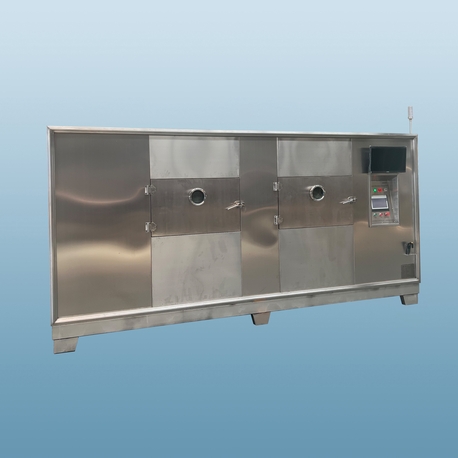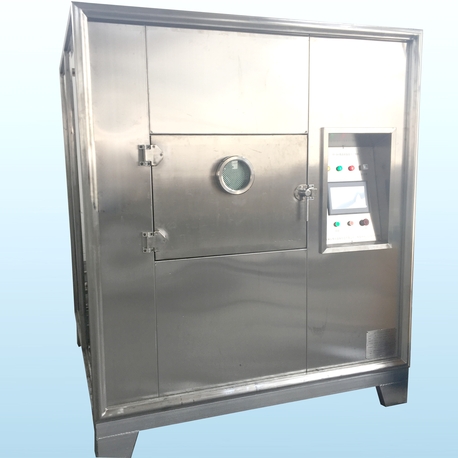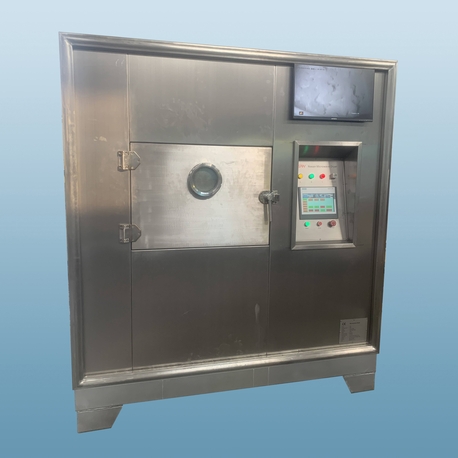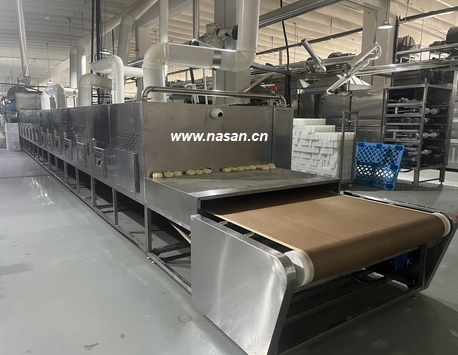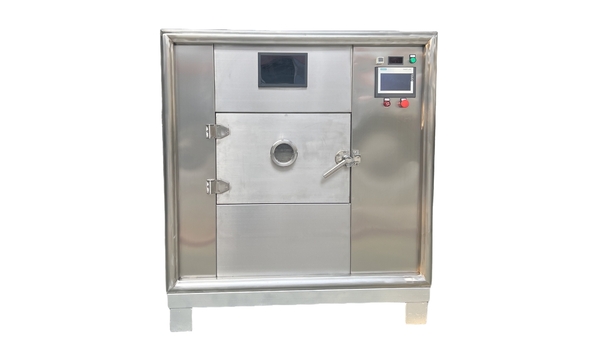The industrial drying sector continuously seeks technologies that enhance efficiency, reduce operational costs, and improve product quality. Among the innovative solutions gaining significant traction is the microwave kiln system. Unlike conventional drying methods that rely on external heat transfer, industrial microwave kiln units generate heat volumetrically within the material itself. This fundamental shift offers profound advantages in speed, energy consumption, and process control. This article provides a detailed analysis of industrial microwave kiln technology, comparing it with traditional dryers, examining cost factors, and outlining critical considerations for selecting a reliable supplier. For plant managers and procurement specialists, understanding the nuances of this technology is crucial for making informed capital investment decisions.
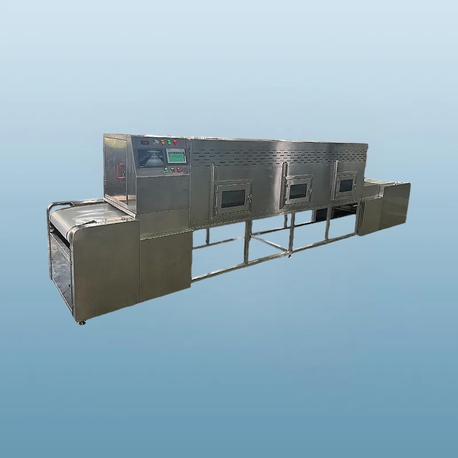
How an Industrial Microwave Kiln Works: A Technical Breakdown
At its core, an industrial microwave kiln is not a kiln in the traditional, high-temperature ceramic firing sense. Instead, it is an advanced drying system that uses microwave radiation to remove moisture.
The Science of Volumetric Heating: Conventional dryers (convection, conduction) work by applying heat to the material's surface, which then slowly migrates inward. This process is often slow and can create a hard, dried shell that traps interior moisture—a phenomenon known as case-hardening. An industrial microwave kiln operates differently. Microwave energy penetrates the material and directly excites water molecules throughout its entire volume, causing them to vibrate rapidly and generate heat simultaneously from the inside out. This results in a much faster and more uniform drying process.
System Components: A typical industrial microwave kiln system comprises a microwave generator (magnetron), a resonant cavity or applicator where the material is placed, a waveguide to direct the energy, a ventilation system to remove evaporated moisture, and sophisticated control systems to regulate power and temperature. The design of the cavity is critical to ensure even energy distribution and prevent hot spots.
Microwave Kiln vs. Traditional Industrial Dryers: A Performance Comparison
When evaluating a microwave kiln against conventional systems like convection ovens or drum dryers, several key performance differentiators emerge.
Drying Speed and Throughput: The most significant advantage is speed. A microwave kiln can reduce drying times from hours to minutes. This dramatic increase directly translates to higher production throughput and smaller factory footprints.
Energy Efficiency: Because a microwave kiln heats only the material and not the surrounding air or the chamber walls, its thermal efficiency is markedly higher. Energy is used directly for the drying task, leading to lower operating costs, especially in high-volume applications.
Product Quality and Control: The uniform, internal heating of a microwave kiln minimizes product degradation. It prevents case-hardening, reduces cracking or warping, and better preserves the material's chemical and physical properties. Precise control over power levels allows for fine-tuning the drying curve for sensitive materials.
Limitations and Considerations: A microwave kiln is not a universal solution. Its efficiency is highly dependent on the material's dielectric properties. Materials with low microwave absorption may not dry effectively. Furthermore, the initial capital expenditure (CAPEX) for a high-power industrial microwave kiln is typically higher than for a conventional dryer of similar capacity. The economic justification, therefore, often lies in the operational expenditure (OPEX) savings and quality improvements.
Key Applications of Microwave Kiln Technology in Industry
The application range for industrial microwave kiln systems is broad and expanding.
Ceramics and Advanced Materials: Drying ceramic tiles, technical ceramics, and catalyst supports with minimal cracking and high uniformity.
Food Processing: Low-temperature drying of ingredients like herbs, spices, and fruits to preserve color, flavor, and nutritional value.
Pharmaceuticals: Precisely drying granules and powders while maintaining strict potency and stability requirements.
Wood and Biomass: Rapidly drying lumber and processing biomass pellets, significantly reducing cycle times compared to traditional kilns.
Textiles and Nonwovens: Efficiently drying fabrics and webs without causing shrinkage or damage.
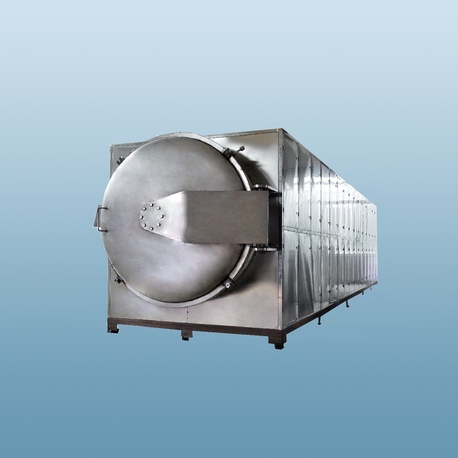
Cost Analysis and Pricing Factors for Microwave Kiln Systems
The decision to invest in a microwave kiln requires a thorough cost-benefit analysis.
Capital Investment (CAPEX): The price of an industrial microwave kiln varies widely based on power rating (e.g., 30kW, 50kW, 100kW), automation level, conveyor system integration, and material handling features. Prices can range from tens of thousands to several hundred thousand dollars.
Operational Expenditure (OPEX): This includes electricity consumption, magnetron replacement (a consumable part with a finite lifespan), preventive maintenance, and labor. The high energy efficiency of a microwave kiln typically results in lower OPEX compared to gas-fired or electric convection dryers over the system's lifetime.
Return on Investment (ROI): Calculating ROI involves quantifying savings from reduced drying times, lower energy bills, decreased scrap rates due to improved quality, and increased production capacity. A well-justified project can often achieve an ROI within 12-24 months.
Selecting a Commercial Microwave Kiln Supplier: A Practical Guide
Choosing the right partner is as important as selecting the technology.
Technical Expertise and Customization: Look for a supplier with a proven track record in your specific industry. They should offer custom-engineered solutions, not just off-the-shelf models. Ask for case studies and references.
Safety and Compliance: Ensure the microwave kiln system is fully compliant with international safety standards (e.g., IEC, FCC) regarding microwave leakage. The supplier must provide comprehensive safety interlocks and documentation.
After-Sales Support and Service: The availability of spare parts, responsive technical support, and service contracts is critical for minimizing downtime. Inquire about the supplier's global or regional service network.
Pilot Testing Capability: A reputable supplier will offer pilot-scale testing using a lab microwave kiln. This allows you to validate the process with your specific material before making a major capital commitment.
The industrial microwave kiln represents a paradigm shift in thermal processing, offering unparalleled speed, efficiency, and quality control for a wide range of materials. While the upfront cost is a consideration, the long-term operational savings and production advantages make it a compelling investment for forward-thinking manufacturers. A meticulous evaluation of your specific process needs, coupled with a careful selection of a technology partner, is the key to successfully leveraging the power of microwave kiln systems and securing a competitive edge in the market.
Frequently Asked Questions (FAQs)
Q1: What types of materials are not suitable for drying in a microwave kiln?
A1: Materials that are transparent to microwaves or have very low dielectric loss factors, such as certain plastics (e.g., PP, PE), dry woods, and some ceramics in their pure form, are not suitable. Additionally, metals will reflect microwaves and cause arcing, making them completely unsuitable for a standard microwave kiln.
Q2: How does the maintenance cost of a microwave kiln compare to a traditional dryer?
A2: A microwave kiln generally has lower routine maintenance costs as it has fewer moving parts and no combustion systems. However, the magnetrons, which are the core components, have a finite lifespan (typically several thousand hours) and represent a significant periodic replacement cost. This must be factored into the total cost of ownership, though it is often offset by substantial energy savings.
Q3: Can an industrial microwave kiln be integrated into an existing production line?
A3: Yes, most industrial microwave kiln systems are designed with integration in mind. They can be configured as conveyorized tunnels or batch units that interface with upstream and downstream equipment through standard material handling interfaces. Close collaboration with the supplier during the design phase is essential for seamless integration.
Q4: Are there any special safety requirements for operating an industrial-scale microwave kiln?
A4: Absolutely. Operators must be trained on specific safety protocols. The systems are equipped with multiple safety interlocks on all access doors to prevent microwave emission during operation. Regular leakage testing is recommended. Proper ventilation is also crucial to remove moisture vapor and any potential off-gassing from the processed materials.
Q5: What is the typical lead time for the delivery and installation of a custom microwave kiln system?
A5: Lead times can vary significantly based on the complexity and power of the system. For a custom-engineered industrial microwave kiln, lead times can range from 16 to 30 weeks from the point of order. This includes design, fabrication, factory acceptance testing, and shipment. Installation and commissioning on-site can take an additional 1 to 3 weeks.


